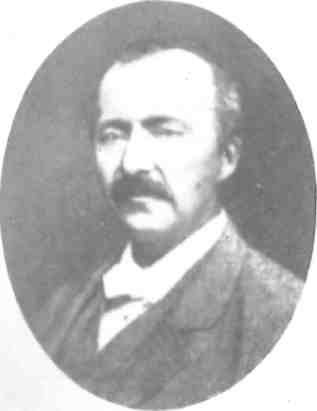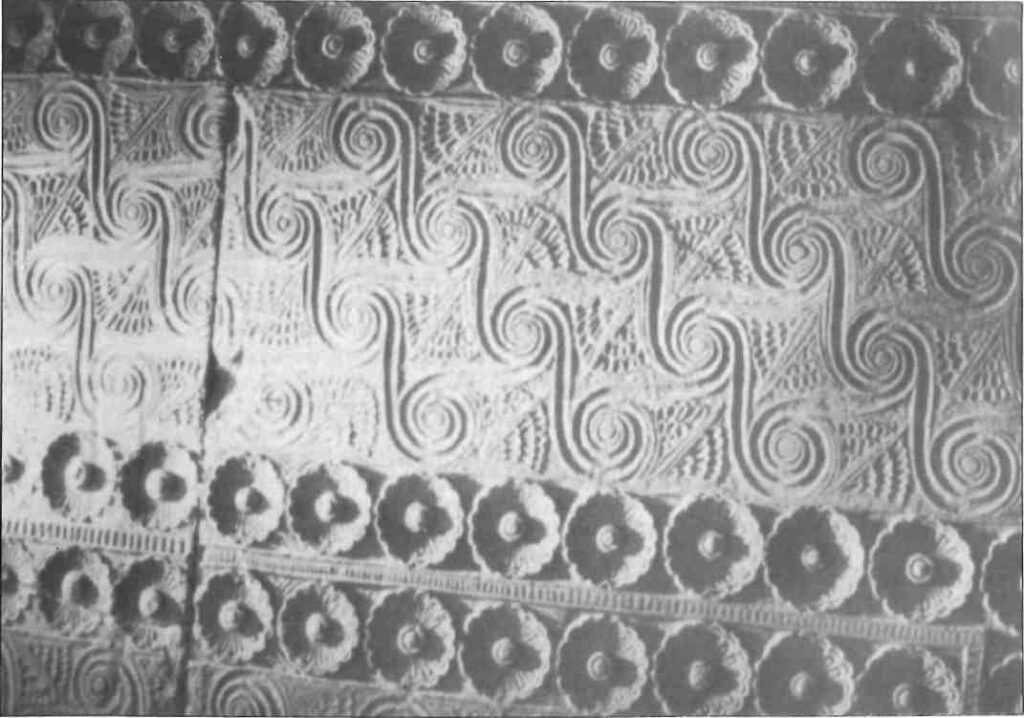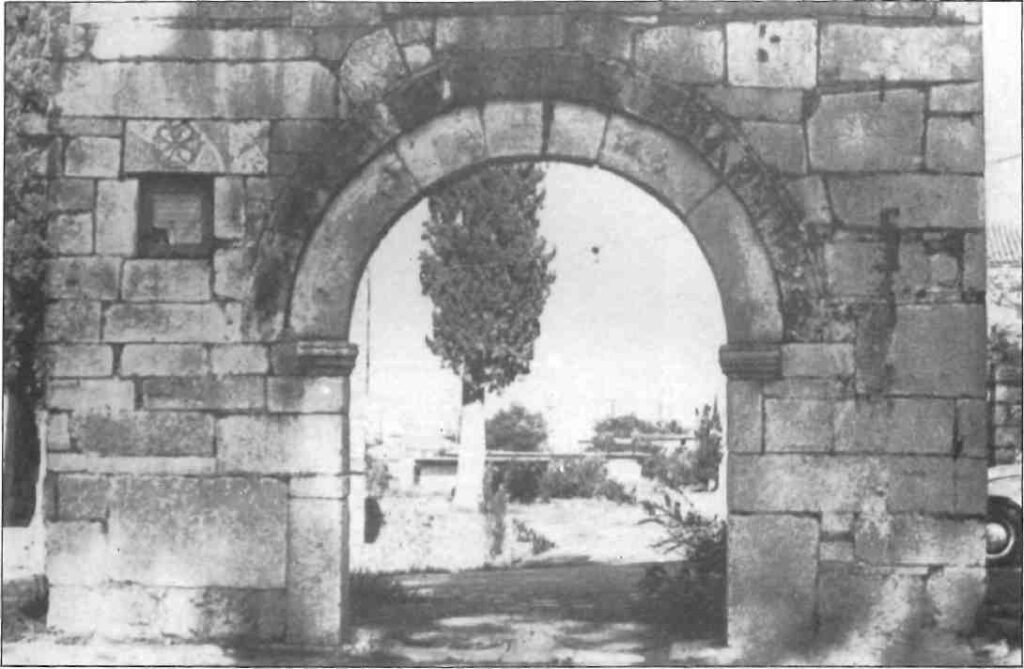Orchomenos. Fifteen centuries before the birth of Christ, its highly skilled engineers drained the greatest lake in Greece, creating a vast fertile plain ringed by sophisticated fortifications and cultivated by slaves. Accomplished goldsmiths, architects, artists, potters, ivory and metal workers all labored exclusively for its royal dynasty and militant aristocracy, masters of a paved and ornamented citadel which dominated the surrounding area. Its immense wealth was proverbial, “Not if he offered me all that goes into Orchomenos” being the prehistoric equivalent of “Not for all the tea in China!” In legend, its “squadron of 30 ships” participated in the Trojan War and it was one of the three cities which Homer described as “gold-rich”, Mycenae and Troy being the other two.

Yet, today the fabled site of “Minyan Orchomenos”, one of the most opulent and influential capitals in late Bronze Age Greece (1600-1100 BC), is now one of the most neglected. It has never been fully excavated and its pottery finds remain almost completely unpublished, split, for lack of a local museum, between Chaironeia, Thebes and Athens.
Two hours drive north of Athens up the National Road to Kastro, formerly a semi-island in the Copais Lake and the main contender for the title of prehistoric “Kopai”, a narrow, tree-lined road stretches across to modern Orchomenos.
An unprepossessing composite of the former villages of Skripou and Petromagoula, the site lies clustered round the base of Akontion, a rough, rocky ridge dominated in the distance by towering, snow-capped Mount Parnassos. No signs convey the existence of the legendary remains tucked away in its back streets among a sprawl of houses, opposite the presently more renowned “Panayia of Skripou” church. The inhabitants, however, proud of their own roots, are more willing to give directions and recount their own unique versions of local historical events. Modern Greece too has its myths, one of them being that walled-off archaeological areas are open from sunrise to sunset. In the provinces, and even in Athens, the gate attendant rules, and site hours are regulated by the vagaries of his temperament and extracurricular interests. At the moment, Orchomenos is open officially from 8:30 a.m. till three in the afternoon.

Immediately inside the enclosure lies the famed tholos tomb known as the “Treasury of Minyas” after the wanax, or king, of the Minyans. It is an architectural masterpiece so similar to the “Treasury of Atreus” at Mycenae that many experts believe it may have been designed by the same person. Still intact when the intrepid Pausanius described it as “one of the greatest in the world” and compared it favorably with the pyramids, its roof later collapsed. The lintel, however, a massive slab of dark grey marble from nearby Levadia, is still in place and eight courses of the wall, showing remnants of the Bronze Age rosettes which once adorned them, are intact.
Early in the last century, Lord Elgin made a determined bid to carry the whole tomb off to Britain by bribing the Ottoman governor with a highly prized public clock for Levadia. Fortunately, the local inhabitants decided the issue: armed with sticks and farm implements, they attacked Elgin’s agents forcing them to abandon his grandiose plans and, apart from one boatload of inscriptions, the secrets of the Minyans were left in peace.
A tantalizing mystery, as yet unsolved, surrounds the origins of these amazingly talented people, the Minyans. They almost certainly came to what is now called Greece by sea, landing somewhere on the Thessalian coast in the late Bronze Age (Mycenian period). Technically advanced, their craftsmen created what must have been a magnificent city centered around a large, colorfully decorated palace on the lower slopes of the already inhabited site of Orchomenos. The Minyan capital became a mighty dynastic hub holding sway over the whole of northwest Boeotia, then known as “Minias”, and trading as far afield as Troy and Cyprus through their port at Larymna.

No one knows what language they spoke but it was possibly a crude Greek since their household accounts and export/import tallies were kept in a Linear B, that unwieldy script used in early Greek commercial transactions but not for literature which retained its oral tradition. As a warrior caste bearing weapons of bronze, they later protected their extensive borders with a spectacular system of watchtowers and forts directed from Gla, an immense, circular stronghold, larger than Mycenae or Tiryns, built of Cyclopean stone blocks. Its remains lie some kilometers from the National Road, on the right roughly opposite Kastro.
After the disintegration of the populous, well organized and culturally innovative Mycenian world, when Orchomenos like many other sites was destroyed by fire, Greek lands sank into abject poverty, their past glories lingering on in collective memory as a semi-mythical, heroic golden age. As for Minyan domains, they shrank to the geography of Copais. Partly dried-up, marshy and malarial in summer, a shimmering sheet of water in winter, this water body defied all further attempts at draining it until Scottish engineers started successful reclamation work in 1817.
At a later date, the site was resettled and its inhabitants joined the Boeotian League and fought alongside the Persians when they invaded Greece. It was twice destroyed by Thebes (364 and 349 BC), its archrival since the legendary times of Oedipus, rebuilt during the reign of Alexander the Great only to suffer further ruin at the hands of the ruthless Roman commander Sulla in 87 BC. Some decades later it was completely abandoned.

Neither its name nor its remains were ever totally lost to history. Travellers through the intervening centuries wrote about it, including Colonel Leake et al, but it wasn’t until Heinrich Schliemann, the renowned German amateur archaeologist, fresh from his world famous discoveries at Troy and Mycenae, excavated there, that Orchomenos awoke from its long slumber.
The digs were disappointing in comparison with his previous spectacular successes. Whatever fabulous wealth had existed had apparently long since disappeared and no gold at all was found. In the inner chamber of the tholos however, Schliemann found slabs of green schist delicately engraved with intertwining spirals, leaves and rosettes which had only recently fallen from the roof, and the archaeologist carefully replaced them, recreating the ceiling of remarkable beauty. From splinters of the same schist found among the debris on the floor, it is supposed that the walls too were once similarly decorated.
Although his stay was short, Schliemann unearthed a large amount of grey monochrome pottery, thrown and glazed, of a type he had previously encountered both at Mycenae and Troy, and gave it the name “Minyan Ware”. It has long been believed that this early wheel-turned pottery, which actually pre-dates the Minyan settlement, was brought to Greece from Anatolia and had generally spread with the movements of loose-knit, linguistically-connected Indo-European tribes. This hypothesis is now no longer wholly accepted and many archaeologists think that the so-called Minyan Ware, characterized by its monochrome grey or yellow ochre, “chalice”-shaped and horizontally grooved stems, was in fact exported from Greece to Asia Minor.
Further, rather piecemeal excavations carried out mainly by distinguished members of the German school at the turn of the century have exposed a series of “cities” and settlements clearly showing that the rock of Akontion was almost continually inhabited from Neolithic to Roman times. More recently, in 1976, Greek archaeologist Theodore Spiropoulos led digs outside the previously walled off site and uncovered a small amphitheatrical theatre (late fourth century BC) in excellent condition with 12 rows of seating. It is presumed to have been dedicated to the god Dionysios whose small shrine was found nearby.
Orchomenos however, specially venerated the Charities, or Three Graces, who were perhaps first worshipped there. In mythology they were the delightful goddesses – daughters of Zeus: Aglaia (brightness), Euphrosyne (joyfulness), and Thalia (bloom). The Charitesia and associated competitions were held in their honor and the local source of the Melas River, known in prehistoric times as Akidalia, was sacred to them. Their sanctuary stood on the site now occupied by the Panayia of Skripou which embodies many of its remains, appropriated in time-honored fashion by the church masons. It was the abundance of inscribed stones among the ruins which, they say, gave the modern district its name – “Skripou” – derived from the Latin “scriptum”.
The church, build in AD 874 and once part of a monastery dedicated to The Dormition, is in itself remarkable, as it features the architectural transition from the early Christian basilica to the inscribed cruciform Byzantine church and is unique in Greece.
Like most old churches it boasts its spate of miracles, and a painting hanging in its entrance depicts an event in September, 1942, during the Second World War, when German tanks were approaching to destroy it. The ground caved in under them making it impossible for them to fire their guns. Members of the Panzer division involved apparently made an annual pilgrimage to Orchomenos from their native Germany to celebrate the anniversary up until last year.
It would perhaps not be blasphemous to hope for help, divine or otherwise, in restoring the prehistoric renown of Minyan Orchomenos, enabling the site to rank in prominence with those of Troy and Mycenae with which it once vied millenia ago.







